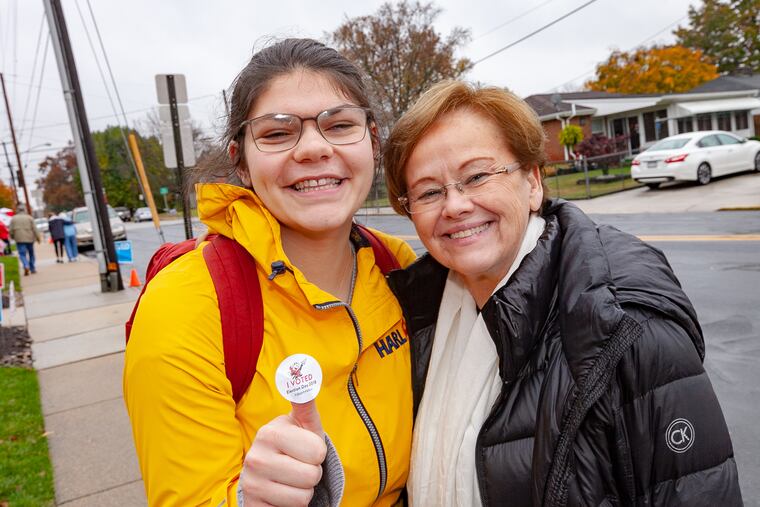How universities can keep the Youth Wave of voting going strong | Opinion
Preliminary analysis shows a nearly 200 percent surge in young voter turnout from just four years ago.

America's young voters were the unsung heroes of last Tuesday's midterm elections. In New York, 29-year-old Alexandria Ocasio-Cortez made history by becoming the youngest woman elected to Congress. Across the country, the 18- to 29-year-old demographic, often maligned for Election Day absences, showed up to the polls in droves. Preliminary analysis shows a nearly 200 percent surge in young voter turnout from just four years ago. Some have dubbed that surge the Youth Wave.
The core of this wave, which those of us in higher education find exciting, are college students who found their voices in this election. They are learning the values of civic engagement and the importance of exercising the right to vote. They are learning how to be lifelong contributors to our democracy, and they look to their faculty and administrators for nonpartisan leadership. Civic engagement and a deep understanding of democracy and its challenges are truly cemented during the college years. We must not fail them.
The voting numbers are important, not just because our students took an active role in helping to shape their future, but because they foreshadow a trend. Research has shown that, for young people, voting is habit-forming. Those who cast a ballot in this election are significantly more likely to vote in future elections. Institutions of higher education must foster that interest, not let it wane. The midterm election is over but the youth wave has just begun, and college and universities must play an important role beyond the classroom.
Take inspiration from Haverford College, where students, who make up the majority of the precinct, previously had to travel a mile and a half to reach their polling place. Persistence on the part of the college and nearby residents, and critical reporting by the Inquirer, helped sway the Delaware County Board of Elections to move the polls to a location on campus that welcomed voters with a pleasant experience, including ample signage and parking.
I also take inspiration from faculty and administrators at Dickinson College, where I am president. Dozens of faculty members and staff served as "celebrity drivers," shuttling students to a nearby polling place. And, in the months leading up to Election Day, a newly formed "Dickinson Votes" committee spent countless hours organizing voter registration drives, holding bipartisan public forums to discuss candidates and the issues, and training poll greeters.
On Election Day, I accompanied students to the polls and watched their happiness as they emerged from the polling place. I was reminded of an election in Nigeria that I monitored a couple of years ago as president of the American University of Nigeria. There, I saw students stand for hours in the blazing sun, proud of their own civic engagement. I saw a similar pride in our students, but one exited dejected. Her name had not appeared on the list of registered voters, and she was turned away. With her college president by her side, she reentered the polling place and asked for a provisional ballot, which had not been offered. That student then voted.
At a time when higher education is often criticized and its relevance debated, I'm proud of the role we're playing in educating students, removing barriers to voting and encouraging them to know their voting rights. My own experience in Nigeria taught me how precious democracy is. I'm optimistic thinking of the work ahead as we look to 2020 and beyond. We can't just ride this youth wave. We must sustain it. We must help the youth wave surge.
Margee M. Ensign is president of Dickinson College.